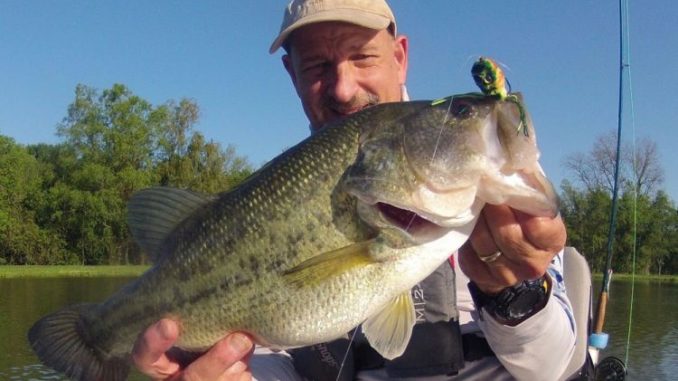
Experts share advice for making hair bugs
If you love flies made with hair, then July is your lucky month.
The second weekend of this month, the annual Contraband Fly Fishing Expo in Lake Charles will feature America’s premier deer hair tier, Pat Cohen.
Two weeks later, Kelly Galloup will be the headliner for the annual North Louisiana Fly Fishers Master Series in Bossier City. Galloup is not only a master of articulated flies, but also one of the country’s top deer hair experts.
An all-purpose material
There’s a reason why top professional guides like Cohen and Galloup use flies made of hair — whether it’s deer, elk, etc. It can be used for all sorts of flies — from bodies of poppers, divers and sliders, to trout flies like Dave’s Hopper and Elk Hair Caddis.
What makes deer hair special is its cellular nature. It’s spongy and buoyant. Hair follicles also trap air, so when the fly sinks — like with divers and sliders — it releases bubbles that aid in the attraction of predatory fish like bass.
For making bass bugs, the best hair is long and thick. Since southern winters are short and mild, most material companies use hides from northern whitetails.
The belly section is what is used for poppers and sliders. This hair is white, easy to dye, and produces vibrant colors. It also tends to have shorter tips, which makes for denser bodies.
Flaring, spinning and stacking
When tying bass bugs, three techniques are employed to give the bug its desired look. In each case, a small amount of hair is cut from the hide, tips are trimmed off and the hair is aligned along the hook shank.
The first is flaring. The thread wrap goes midway over the hair and is pulled tight. This causes the hair to flare out, but to stay on one side of the hook.
The second is spinning. A couple of loose wraps are made, then as the thread is pulled tight, the hair rotates around the hook and flares out at the same time.
The third is stacking. This is used to create contrasting patterns such as spots. A small amount of hair is placed into an already flared section. The hair is held tight while the thread is pulled tight, which forces the small amount of hair to stay in place.
Some expert advice
Tying hair bugs isn’t complicated, but it is tedious. It’s as much art as it is skill and for that reason, very few tiers take it on. Two Louisianans who’ve done this exceptionally well are Pete Sturgis of Greenwell Springs and Kevin “Doc” Andry of Baton Rouge.
Readers may recall Andry as Louisiana’s “Crease Fly Ambassador.” But when he’s chasing big bass, he prefers using one of his hair bugs. His favorite is a frog pattern, with which he’s caught more multi-pound bass than on any other fly.
Sturgis prefers a slider, like the Dahlberg Diver — one of my favorite flies for big bass. He ties his with a short collar so they’re easier to cast.
Both Sturgis and Andry agree that poppers are the best all-around fly — good for redfish and bass in the marsh, and specks in the surf.
The right stuff
Tying a good bass bug requires the right materials and tools.
Andry and Sturgis both tie on Regal vises. The jaws give a firm grip on hooks and the rotary feature allows for better trimming of the hair body.
Both men use Gamatsku B10S Stinger hooks for their flies.
Cinching hair down requires tough thread. Flat waxed nylon will do, but both men prefer gel spun, as it’s stronger and slides over the hair.
Packing deer hair is what gives it a tight body and keeps it floating longer. For that, a good packer is required. Sturgis uses a Brassy packer. After each “pack” to compress the hair back, he makes two half-hitch knots, then applies head cement on the knot.
Andry uses a Fugly Packer (created by Pat Cohen) and calls it “a game changer” as far as getting highly-compressed bodies. He too secures each pack with adhesive.
For trimming the hair, good serrated scissors are needed. Andry uses Dr. Slick brand, while Sturgis gets his from office supply stores. Afterwards, the final trim is done with a razor blade.
A few more tips
Sturgis notes that the denser the hair, the longer the fly floats, but also the less air bubbles. For that reason, sometimes a lesser-compressed slider can be the ticket.
Andry says his best color combinations — after the green/white for his frogs — are firetiger (orange/chartreuse) and pink and chartreuse for speckled trout.
Both men agree that hair bugs are a must-have. The combination of popping, gurgling and bubbling will entice strikes when other flies fall short.


